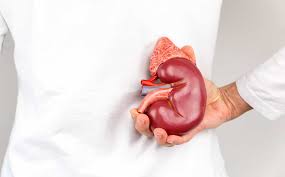News
Article
Welireg Plus Cabometyx Shows Anti-Tumor Activity in Kidney Cancer Type
Author(s):
The Welireg-Cabometyx treatment combination demonstrated anti-tumor activity for some patients with clear cell renal carcinoma, according to a phase 2 trial.

The treatment combination of Welireg (belzutifan) and Cabometyx (cabozantinib) demonstrated durable anti-tumor activity in patients with clear cell renal cell carcinoma (ccRCC) who were treatment-naïve or had previous treatment with immunotherapy, according to results from a phase 2 trial.
The data from the phase 2 trial, LITESPARK-003, were presented at the 2023 European Society for Medical Oncology (ESMO) Annual Congress in Madrid, Spain by Dr. Toni K. Choueiri, professor of medicine at Harvard Medical School and an attending physician, director of the Genitourinary Oncology Disease Center, and director of the Lank Center for Genitourinary Oncology at the Dana-Farber Cancer Institute in Boston, Massachusetts.
In his presentation, Choueiri explained that the inactivation of the von Hippel-Lindau gene (VHL; a mutated gene that increases the growth of abnormal cells) results in the overexpression of hypoxia-inducible factors (HIFs; proteins responsible for cell responses to changes in oxygen levels and activate specific genes for cell growth and survival).
Choueiri added that initial results from LITESPARK-003 showed promising anti-tumor activity in patients who were either treatment naïve (cohort 1) or previously treated with immunotherapy (cohort 2).
Cohort 1 had 50 patients enrolled and treated, with a median follow-up of 24.3 months; however, 24 patients discontinued treatment. Cohort 2 had 52 patients enrolled and treated, with a median follow-up of 39.8 months. Forty-six patients discontinued treatment.
At a median follow-up of 14 months, there was a 57% overall response rate (ORR; percentage of patients who had a partial or complete response to treatment) in cohort 1. At a median follow-up of 24.6 months, there was a 31% ORR in cohort 2. At the 2023 ESMO Congress, Choueiri presented updated findings from both cohorts.
In cohort 1, 28 patients (56%) were International Metastatic RCC Database Consortium (IMDC) favorable risk, and 22 patients (44%) were IMDC intermediate/poor risk. In cohort 2, 11 patients (21%) were IMDC favorable risk and 41 patients (79%) were IMDC intermediate/poor risk.
Choueiri reported that ORR in cohort 1 was 70% in the entire cohort, 79% in patients who were International Metastatic Renal Cell Carcinoma Database Consortium (IMDC) favorable risk and 59% in patients who were IMDC intermediate/poor risk.
In cohort 2, ORR was 31% in the entire cohort, and 27% in patients who were IMDC favorable risk and 32% in patients who were IMDC intermediate/poor risk.
Choueiri reported that all patients in cohort 1 had a reduction in target lesion size and that in cohort 2, 45 of 51 patients (88%) with available post-baseline imaging saw a reduction in target lesion size.
In cohort 1, the median progression-free survival (PFS; time during and after treatment when the patient lives and the cancer does not worsen) was 30.3 months, and in cohort 2, the median PFS was 13.8 months. In cohort 1, the median overall survival (OS; length of time from diagnosis or start of treatment when a patient still lives) was not reached (meaning more than half of the patients in that cohort had not died) and in cohort 2, the median PFS was 26.7 months.
Any-grade treatment-related side effects were reported in 100% of cohort 1 and 98% of cohort 2. Treatment-related side effects of grade 3 or higher (mild to severe) occurred in 23 patients (46%) in cohort 1 and 33 patients (64%) in cohort 2.
There were no treatment-related deaths in cohort 1, but one patient experienced treatment-related death in cohort 2. Seven patients (14%) in cohort 1 discontinued any drug because of treatment-related side effects, and 11 patients (21%) in cohort 2 discontinued any drug because of treatment-related side effects.
Serious treatment-related side effects were observed in seven patients (14%) in cohort 1 and 16 patients (31%) in cohort 2, with dose reduction because a treatment-related side effect occurred in 38 patients (76%) and 37 patients (71%) in cohorts 1 and 2, respectively.
“(Welireg) plus (Cabometyx) continue to show durable anti-tumor activity in patients with clear cell RCC who are treatment-naïve or previously treated,” Choueiri concluded.
For more news on cancer updates, research and education, don’t forget to subscribe to CURE®’s newsletters here.




